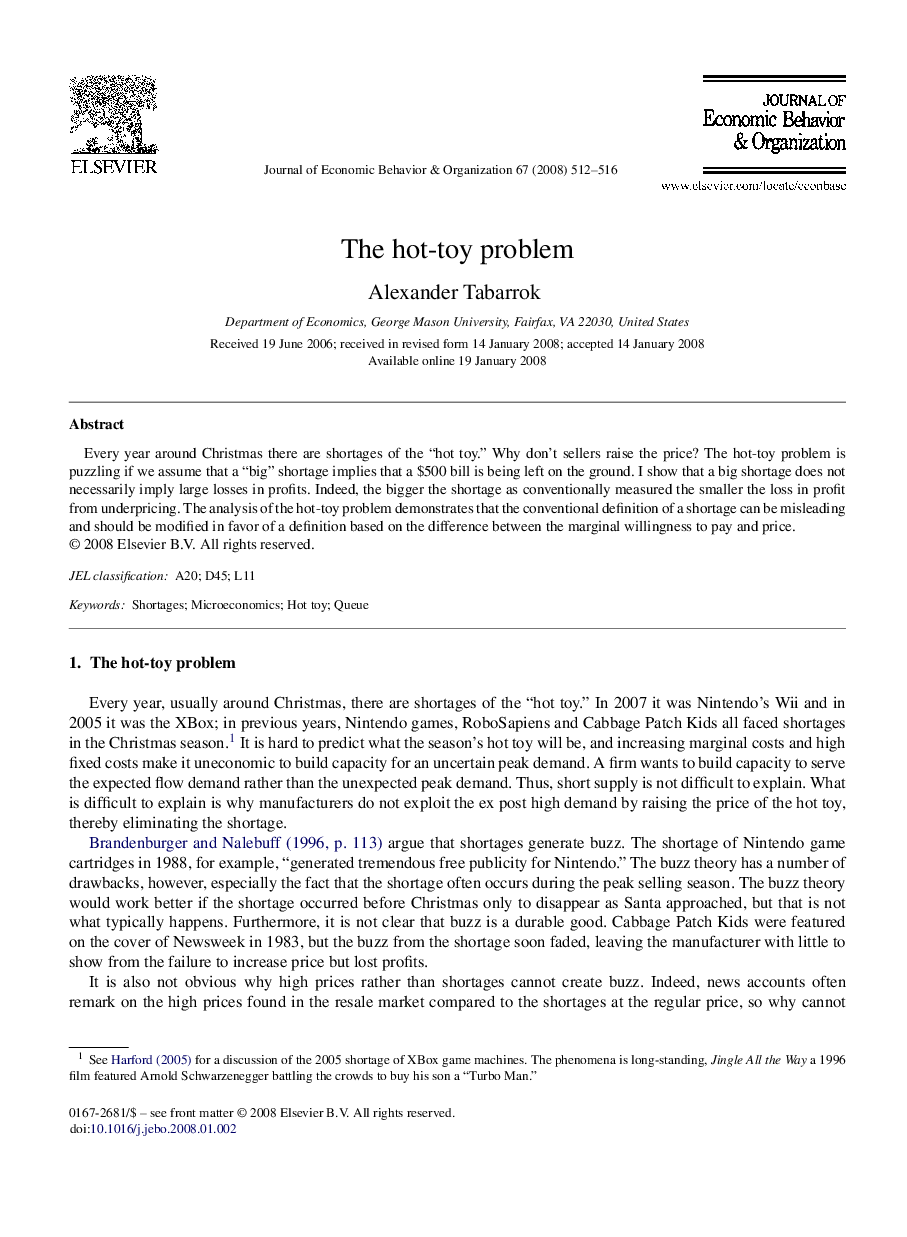| Article ID | Journal | Published Year | Pages | File Type |
|---|---|---|---|---|
| 884679 | Journal of Economic Behavior & Organization | 2008 | 5 Pages |
Abstract
Every year around Christmas there are shortages of the “hot toy.” Why don't sellers raise the price? The hot-toy problem is puzzling if we assume that a “big” shortage implies that a $500 bill is being left on the ground. I show that a big shortage does not necessarily imply large losses in profits. Indeed, the bigger the shortage as conventionally measured the smaller the loss in profit from underpricing. The analysis of the hot-toy problem demonstrates that the conventional definition of a shortage can be misleading and should be modified in favor of a definition based on the difference between the marginal willingness to pay and price.
Keywords
Related Topics
Social Sciences and Humanities
Economics, Econometrics and Finance
Economics and Econometrics
Authors
Alexander Tabarrok,
